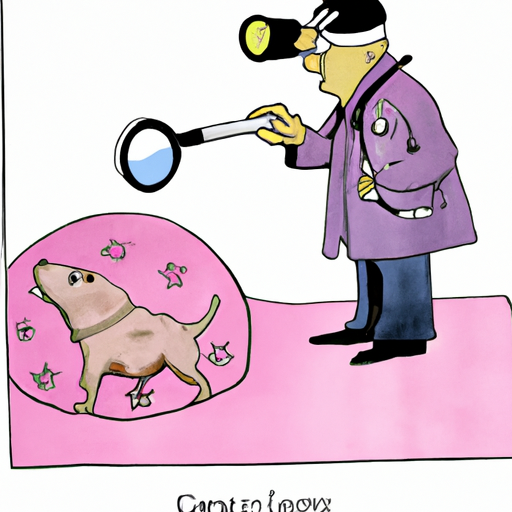As a dedicated caregiver for your beloved pet, it’s important for you to be well-informed about their health and well-being. One of the serious health threats that dogs face is cancer. Here, we will delve into how cancer is detected in dogs, what signs to look out for, and what steps can be taken for early detection and treatment.
H2: Understanding What Cancer is in Dogs
Just like humans, dogs can develop cancer. Cancer is the uncontrolled proliferation of cells, which often leads to the formation of tumors. However, not all tumors are cancerous. They can be benign (non-cancerous) or malignant (cancerous).
Cancer affects dogs in various ways. It can occur anywhere in the body, affecting different organs and tissues. The most commonly affected areas include the skin, breast, bones, and lymph nodes.
H2: Signs and Symptoms of Cancer in Dogs
Spotting the signs of cancer early is crucial in managing the disease. However, these signs can vary widely based on the type and stage of cancer. Here are some common symptoms that may signal cancer in dogs:
- Unexplained weight loss
- Decrease in appetite
- Difficulty in eating or swallowing
- Persistent wounds or sores that don’t heal
- Difficulty breathing, urinating or defecating
- Lumps or swellings on the body
- Bleeding or discharge from any body opening
- Offensive odor
It’s important to remember that these symptoms are not exclusive to cancer. They can also be indicative of other health issues. Thus, if you notice any of these signs, it’s important to consult your veterinarian for a proper diagnosis.
H2: Diagnostic Tests for Detecting Cancer in Dogs
Early detection of cancer can significantly increase the chances of successful treatment. Hence, if your dog exhibits any signs of cancer, your vet may recommend one or more of the following diagnostic tests:
-
Physical Examination: This includes a thorough check of your dog’s body to identify any abnormalities such as lumps, swellings, or changes in skin color.
-
Blood Tests: These help to assess your dog’s overall health and detect the presence of certain cancer markers.
-
Biopsy: This involves taking a small sample of tissue or cells from the suspected area for microscopic examination.
-
Imaging Tests: These may include X-rays, ultrasounds, CT scans, or MRIs to visualize tumors in the body.
| Diagnostic Test | Purpose |
|---|---|
| Physical Examination | Identify physical abnormalities |
| Blood Tests | Detect cancer markers and assess overall health |
| Biopsy | Microscopic examination of tissue sample |
| Imaging Tests | Visualize tumors |
H2: Treatment Options for Dogs with Cancer
Once cancer is detected, the treatment options depend on the type and stage of cancer, as well as your dog’s overall health. Common treatment options include:
-
Surgery: This is often the first line of treatment, especially for tumors that are localized and haven’t spread to other parts of the body.
-
Chemotherapy: This involves the use of drugs to kill cancer cells. It’s often used in cases where the cancer has spread to other parts of the body.
-
Radiation Therapy: This uses high-energy beams to kill cancer cells and shrink tumors.
-
Immunotherapy: This boosts your dog’s immune system to help it fight the cancer cells.
-
Palliative Care: This focuses on providing relief from the symptoms and improving the quality of life for dogs with advanced cancer.
FAQ Section
Q: What breeds are more prone to cancer?
A: Certain breeds like Boxers, Golden Retrievers, and Rottweilers have a higher risk of developing certain types of cancer. However, cancer can affect dogs of any breed.
Q: Can cancer in dogs be prevented?
A: While there’s no surefire way to prevent cancer in dogs, certain measures like maintaining a healthy diet, regular exercise, limiting exposure to known carcinogens, and regular vet check-ups can reduce the risk.
Q: Is cancer in dogs curable?
A: The curability of cancer in dogs depends on the type and stage of cancer, as well as the overall health of the dog. Early detection and treatment can significantly improve the prognosis.
Q: What is the life expectancy of a dog with cancer?
A: The life expectancy of a dog with cancer can vary widely depending on the type and stage of cancer, the age and overall health of the dog, and the treatment options available.
With the right information and vigilant care, you can play a pivotal role in safeguarding your dog’s health. Early detection is key in managing cancer in dogs, so stay observant, consult with your vet regularly, and provide your furry friend with the best care possible.



